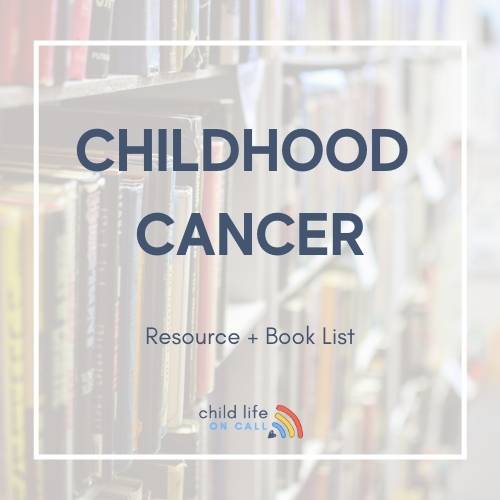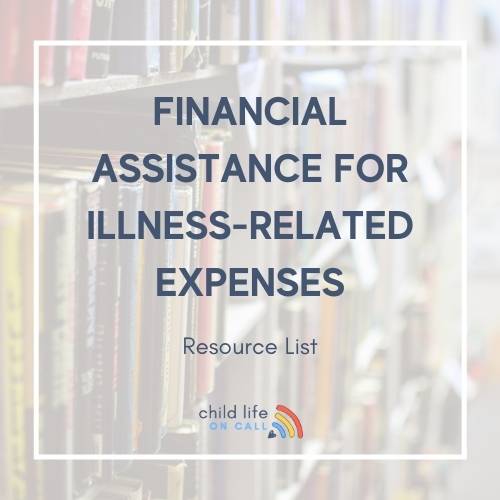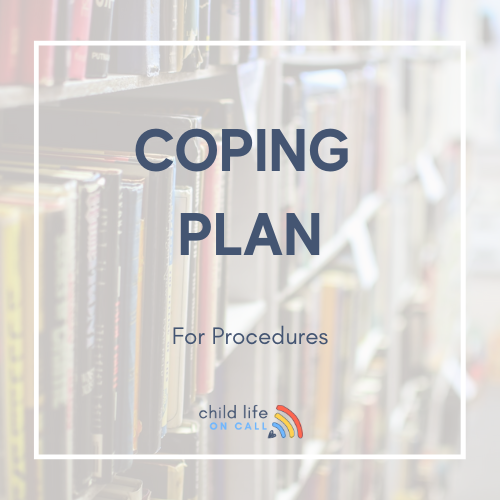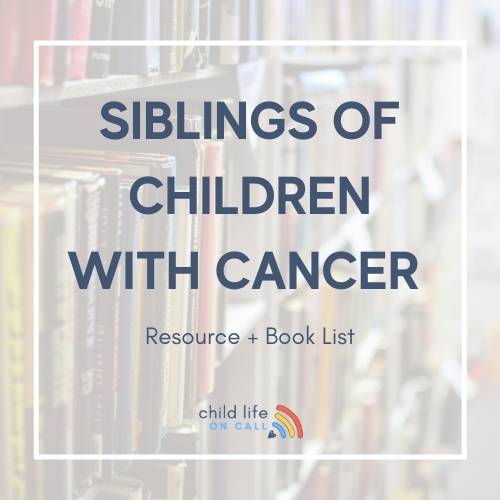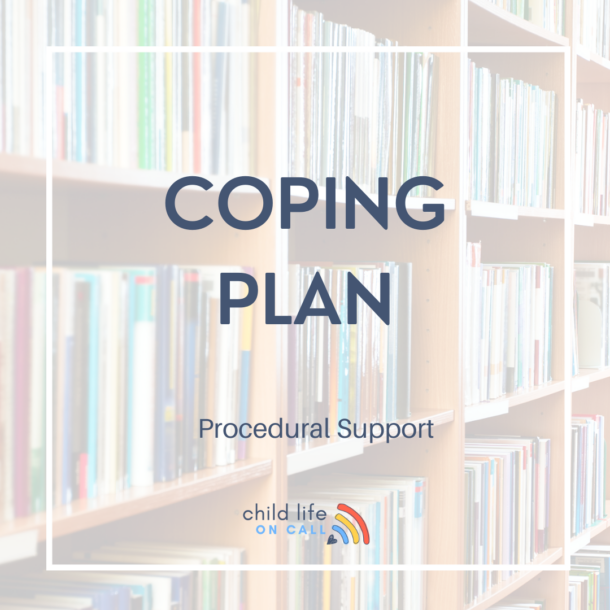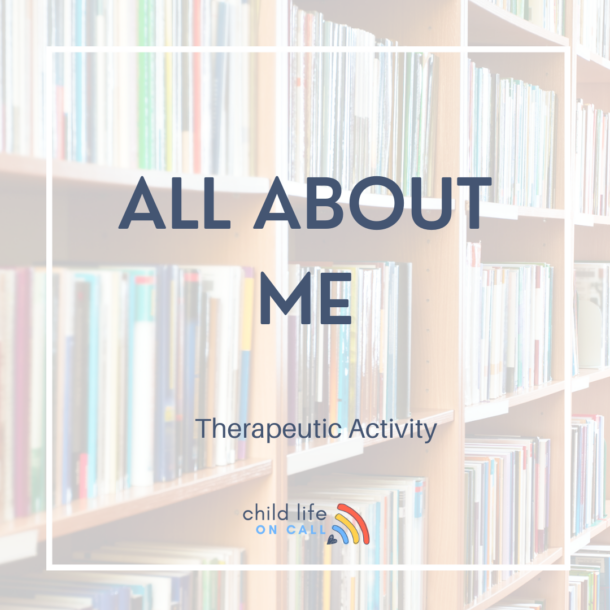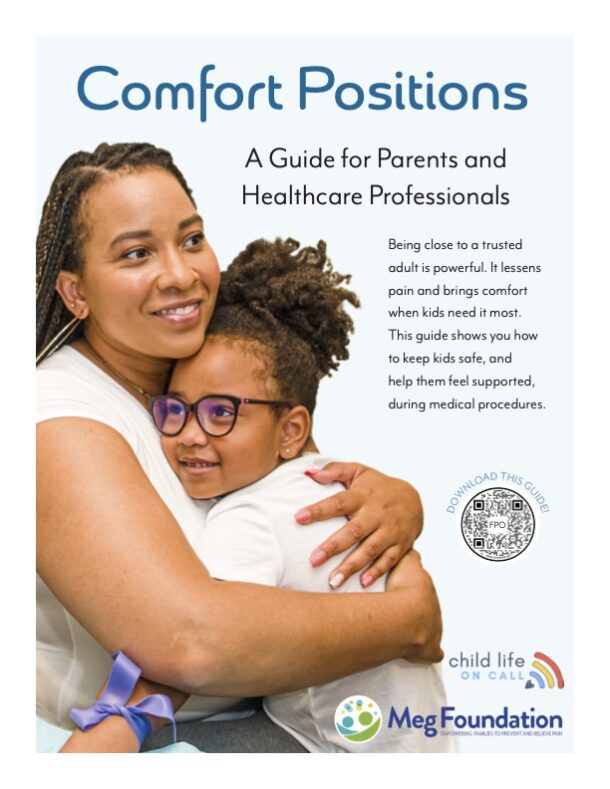"I've learned so much in this whole process. It's like you have a depth inside of you that resurrects as an advocate and high alert, and it lives inside of you when you need it." -Aspen, Willa's Mom In this episode of Child Life On Call, host Katie Taylor and guest...
Episode 99 | Kat’s Story: Chronic Illness as a Teenager
Podcast Show Notes
My guest today, Kat, is sharing her story as a child and now as an adult with chronic illness. I think it’s important for us to change our perspective a bit and hear what the patient has to say. Kat is the community manager at The Mighty, and she has also written two children’s books: Migraine and Mia and Surgery on Sunday. She is such a creative spirit, and she gets really honest with us about what it was like being a teenager in the hospital. She shares what her parents did that worked well, what could have been done differently, and how to support teens with chronic illness.
In this episode, we talk about…
[1:25] Kat’s background
Kat is a children’s book author, having written Migraine and Mia and Surgery on Sunday. She is also an editor and a writer for adults primarily in the chronic illness, disability, and mental health spaces. She believes in the importance of sharing her story, because parents may wonder as they’re going through the weeds of it, what the future looks like for their child. It’s cathartic for Kat to share as well, as she has the opportunity to look back on everything she has been through and realize how far she has come.
[2:28] The beginning of Kat’s health issues
When Kat was younger, she had a few different surgeries. She had ear tubes, she had her tonsils out, and she had a more extensive eardrum surgery. Her health issues really began, however, when she was fifteen years old and a freshman in high school. She was a runner and a soccer player, and she had an infection in her right ear that just wouldn’t go away. After several trips to the surgeon who had done her previous surgeries, she kept hearing that it would go away on its own.
Kat tried different antibiotics and treatments and it was only getting worse. They decided to do an exploratory surgery, and her parents experienced that dreaded moment where they get pulled to the side in the waiting room and told that Kat had a severe bacterial infection that had wormed its way throughout her skull and into the top of her brain and the dura. They asked for her parents’ permission to give her a PICC line, which she then had for eight weeks and she had to administer IV medications to herself three times a day.
[4:01] What helped Kat when she was in the hospital
Kat wasn’t in the hospital as long as you might think – she was probably there for three or four days. It was a blur, but she remembers getting a few phone calls on her room phone. She was so thankful that people were reaching out to her, even though she was not in a great place physically. She also remembers that there was an art cart that went around, and patients could choose a piece of art to put in their rooms. That piece of art gave her a lot of hope. Kat also remembers her parents bringing in little travel games after surgery, like Monopoly and Scrabble. Even though she was pretty miserable, she remembers those little bright spots. At the time, she felt like she was so focused on how she was feeling. Looking back now, however, she is so happy that she has those little diamonds to hold on to.
[5:51] Looking back on Kat’s surgical experiences
Kat has had many surgeries since this particular surgery. As she gets older, she finds that she gets more anxious. Before the exploratory surgery, she was feeling optimistic. She doesn’t really have issues going in and out of anesthesia, so that isn’t usually an issue.
Between the years of 2016 and 2018, Kat had four major surgeries which took her out of work for a long time and reset her life in a very different direction. She found it to be harder each time, and she thinks it is because you have more context as you get older. You know what can go wrong, you are in a different season of life, and you have different relationships and support systems. It is also just harder on the body as you get older, especially the more surgeries you have.
[7:36] Handling physical differences as a teenager
The PICC line is something visible on your body, and I asked Kat how she handled that as a teenager. Kat shares that she was relatively confident as a freshman in high school. She was an athlete and she had a good group of friends. What was harder for her was experiencing side effects of the antibiotics. She started wobbling and running into things. She fell into a small creek at her high school, she fell down some stairs, and she fell down the bleachers. That’s when she became self-conscious, because she didn’t know what was happening. The PICC line had to be covered in order to be hygienic, so it kind of looked like an accessory. When she started experiencing an invisible trigger, however, that was really hard.
One of Kat’s most vivid memories from high school was about six weeks into her antibiotics. She was sitting at her desk taking a quiz, and the quiz looked like it was on the floor. She started crawling around on the floor trying to find it, and her teacher asked her what she was doing. When she told him she was trying to find her quiz, he told her that it was on her desk. That was when it really hit her that something wasn’t right.
It started taking her a long time to walk up a flight of stairs, and she was having trouble with her depth perception. It was very troublesome, and it was obvious that she was having problems. They went to an infectious disease doctor and then her surgeon, and explained what was happening. They said she was likely experiencing side effects from the IV antibiotics, and the infection wasn’t entirely gone yet so she had to continue taking them.
By the end of those eight weeks, they found out that Kat had experienced ototoxicity, which is essentially poisoning from an IV antibiotic. It wiped away Kat’s entire vestibular system, and it was the catalyst to having a migraine almost every day for 18 years.
[11:30] The vestibular system and its role in the body
Your vestibular system is a fancy word for ‘balance’. The ear and brain connection is responsible for that mechanism. Kat describes the vestibular system as the basis for staying solid and grounded. It stabilizes your vision. When you think about someone losing their balance system, you probably think about wobbling, falling, and running into things. What Kat didn’t realize until it happened to her was that the system also makes it so that if you look at a lamp, you see a singular lamp. Because she now has bouncing vision, everything bounces. She was looking at her computer as she was recording this podcast interview, and she could see several computers. Since she has had this issue for so long, she wasn’t even sure which one was the main computer.
The vestibular system is what is responsible for feeling drops on roller coasters or feeling an elevator going up and down. It allows you to feel that a car is moving. Kat doesn’t feel any of that anymore. She goes on roller coasters, and she can sit in the front seat without feeling her stomach drop. While she looks like a daredevil, she actually just can’t feel it at all.
[13:02] How Kat’s parents helped her deal with chronic illness as a teenager
Kat shares that the big thing that helped her was being included as part of the team making medical decisions. That was the start of her self-advocacy journey, recognizing that as the patient you should have a say in your care no matter how old you are. Even if it is a younger child, you can simply explain that they may have to have a surgery or start a medication. Communicating in age-appropriate ways is critical, but having those conversations in the open and not behind closed doors gives the person a lot more validity in their experience.
Another thing that was helpful for her was her parents facilitating conversations about the connection between physical illness and mental health. They also didn’t show their fear to her, and despite the importance of being open Kat thinks this was a positive for her. Sometimes when you are the patient going through a harrowing physical journey, other people’s fears can feel like an extra burden. Not showing that in front of your child can be really powerful and helpful. There is a sweet spot where you don’t want to take things too far, but you also don’t want to pretend that everything is wonderful. Kat thinks that a family support system will get into a groove that works for them when it comes to figuring out how much is too much emotion and how much is too much conversation.
Kat is close to her parents and they are very supportive, and she also has a supportive partner who is really integral to her entire health experience. She also has a lot of great friends, as well as co-workers, some of whom have health challenges as well. Kat can talk openly about how she is feeling physically, and that has been really freeing and healing for her as well.
[16:57] Coping with pain
Kat explained that she has something called SUNCT Syndrome, which involves up to 200 tiny headaches a day. She is dealing with pain frequently, and she shares with us how she copes. Kat has had to make a lot of sacrifices and lifestyle changes, such as working from home. She also tries not to schedule things on the weekends.
In terms of emotionally managing her pain, sharing her story is helpful. Doing this interview helps her to feel less embarrassed. She is definitely at a point in her life where her friends are having different journeys – starting families, and going on vacations (COVID aside). That hurts for Kat, but sharing her story is healing, even if it doesn’t take the pain away.
[19:02] Kat’s advice for herself as a teenager
Kat would tell her teenage self that life is going to be hard. She isn’t a fan of toxic positivity, or the idea that you should just be happy to be alive. That’s really hard to hear when you’re in physical pain. So she would tell herself that life is going to be hard, but that it is also going to be worth it. There will be lots of things that will bring her joy, her story will have purpose, and that she will continue to live a fulfilling life – even if it looks different than what she thought it would look like. She would also tell herself that sharing her story helps other people who may not be in a spot in life to tell theirs to feel a little less alone. She wishes that her younger self would have known that there would be a way to recover that wouldn’t make it so hard all the time.
[20:30] Connecting with others in similar circumstances
When it became clear that Kat’s vestibular system was gone, her parents did a lot of research and connected her with a group called Wobblers Anonymous. She isn’t sure if they exist anymore, and at the time they were all significantly older than Kat. The antibiotic that she was given isn’t used much anymore because of the side effects, but it also tends to be applied later in life. So she connected with people in their sixties, seventies, and eighties. Even though they couldn’t tell her things like, oh, this is what it was like when I was in high school, it was really validating to hear their struggles.
Kat went through college and her twenties without meeting anyone with chronic illness, and she didn’t realize how isolated she was until she started talking to other people with chronic illness. Instagram is an amazing place for people that live with illness, and she was able to connect with others who shared her diagnosis. That experience led her to The Mighty, where she works now. She helps connect other people who live with the same diagnoses, and that has been crucial for her journey. Knowing that someone else gets it is so helpful.
Connect with Kat:
Have you heard? The Child Life On Call mobile app for parents, kids and their care team will be available in 2022. Sign up to stay informed here
Child Life On Call is a community of parents and professionals that share ideas, stories and resources to help YOU navigate your child’s unique experiences. We give you strategies to support yourself and your family through life’s challenges. We are so glad you are here.
Child Life On Call | Instagram | Facebook | Twitter
You Might Also Like…
214: Sacrifice, Advocacy, Joy: Raising a Son with End Stage Kidney Disease – The Ransome Family’s Story
"Sometimes it's really therapeutic though to remember all that you have gone through because I feel like there are times when we look at each other and I'm like how did we get here?" Taylor Ransome We're grateful for our sponsor for this episode, Nestle Health...
213: Parents, CCLS, Students: Show Up Exactly As You Are
In This Episode: Katie Taylor goes off the beaten path in this special episode to share a profound moment of inspiration that struck her. This episode is a heartfelt message to child life specialists, students, and parents, emphasizing the importance of showing up as...

